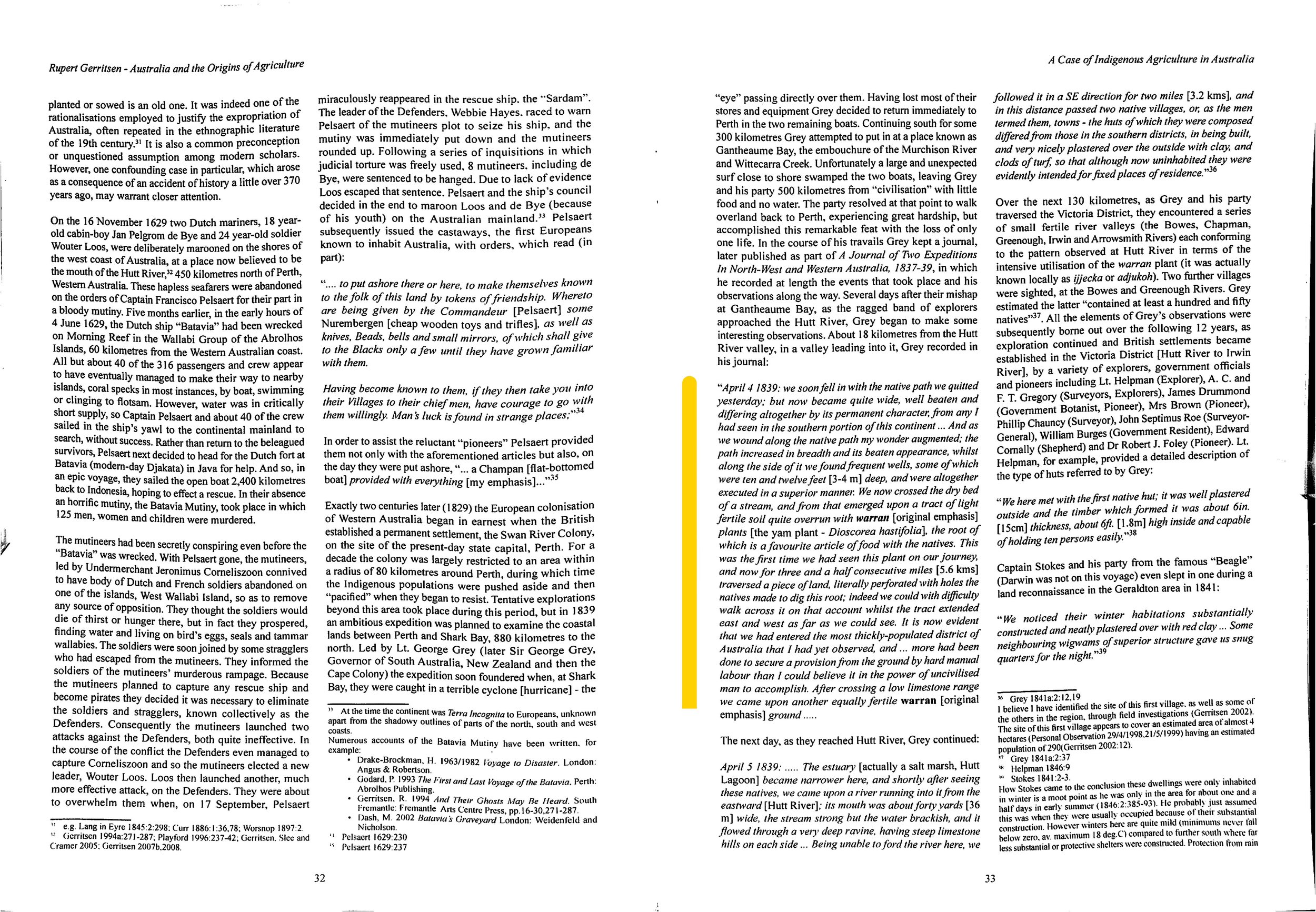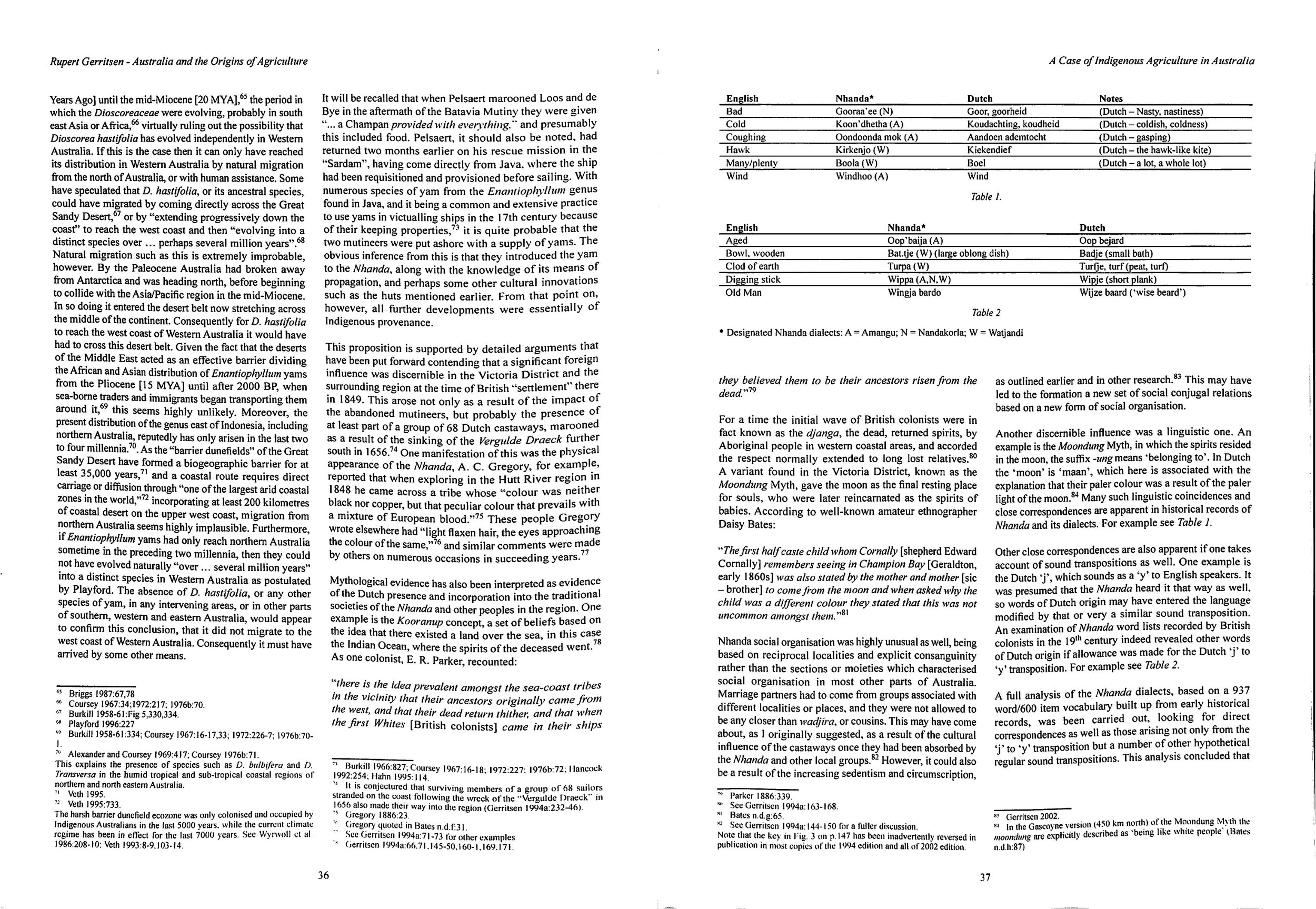Did the Dutch Teach Aborigines How to Cultivate Yams?
Mr Pascoe, in Dark Emu and in his lectures, waxes lyrical about the Western Australian explorer George Grey’s sightings of a,
“tract of light fertile soil quite overrun with warran [yam]..…and now for three and a half consecutive miles traversed a piece of land, literally perforated with holes the natives made to dig this root; indeed we could walk with difficulty across it on that account whilst the tract extended east and west as far as we could see”, and “the frequent wells...altogether executed in a superior manner”,
which he quotes from one of his main sources of evidence, the scholar Rupert Gerritsen. This description by Grey in Dark Emu (2018 reprint, p17) leads the reader to convince himself of the existence of a pre-colonial, “sophisticated Aboriginal agriculture complete with an irrigation system for the production of yams” on a vast scale.
What Mr Pascoe doesn’t tell the reader however, is that he has lifted this isolated section from the brilliantly detailed work of Gerritsen, and totally omitted any reference to the crucial paragraphs before, and after, this section. These paragraphs detail Gerritsen’s theory that Dutch survivors from the Batavia shipwreck and mutiny landed on the West Australian mainland and befriended the local aboriginal tribe, the Nhanda, inter-married with them, and introduced them to the cultivation of the Asian yam variety that the Dutch were most probably carrying as supplies.
Figures 1 to 4 below are from the Gerritsen reference, which is quoted by Mr Pascoe, with the paragraph selected for inclusion in Dark Emu highlighted in yellow. Readers will see the whole context if they read all four pages, or download a more detailed paper by Gerritsen on his theory : here.
A fascinating story of how the Dutch introduced yam agriculture to the aboriginal Nhanda tribe in Western Australia in 1629, some 200 years prior to the arrival of the British explorers and settlers.
Figure 1 : Highlighted in yellow, the page 33 section describing the explorer George Grey’s description of the “cultivated” yam fields, that Mr Pascoe has transcribed to his Dark Emu account (2018 reprint, p 17). From the second paragraph of first column of page 32, Gerritsen describes in detail the circumstance of the Dutch presence on the west coast of Australia some 200 years earlier.
Figure 2 : Gerritsen develops his theory further with the crucial evidence being the isolated occurrence of this variety of yam, Dioscorea hastifolia, around south-western Australia, separated by a great distance from its natural distribution in northern Australia and Asia. Evidence is given that it did not migrate to this isolated pocket of south-western Australia naturally, so it must therefore have arrived by some other means, such as possibly via the Dutch castaways.
Figures 3 & 4 : Gerritsen’s final paragraphs detail linguistic, mythological and other evidence to support his theory of a major influence of the Dutch in this region prior to British settlement.
“Up to 16% of the Nhanda language would appear to have been derived from Dutch.”- Gerritsen
Figure4 : Gerrisen, R., Australia and the Origins of Agriculture, BAR International Series 1874, 2008.









